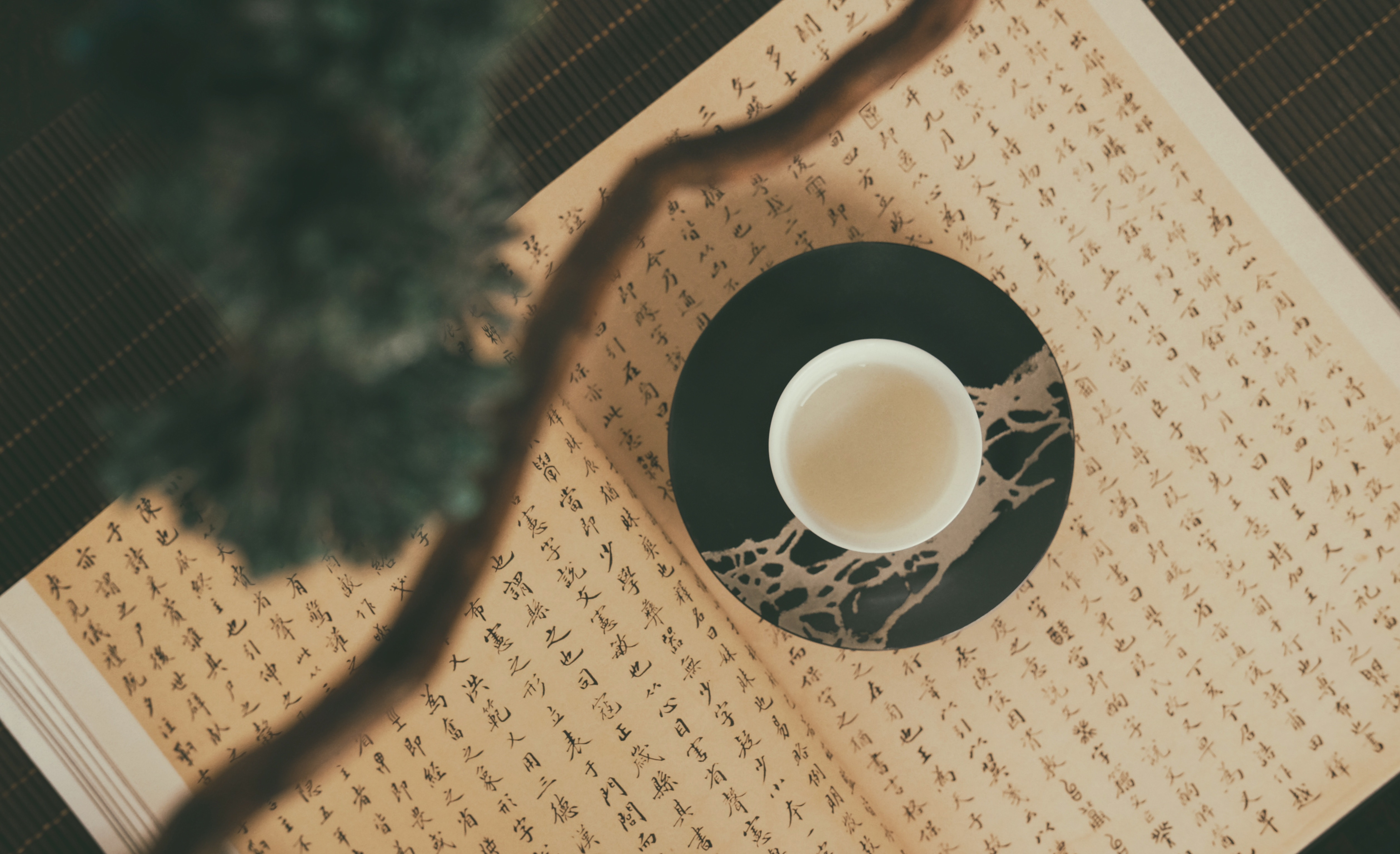

Chinese elements are easily recognizable, highly differentiated, and connected to cultural characteristics. They are signified in arts, ideology, lifestyle, and more. Some of the most famous China cultural design that are renowned worldwide include Chinese ink brush paintings, Chinese calligraphy, and blue and white porcelain. Acclaimed for their originality and creativity, Chinese elements have indeed influenced the perception of China on the world stage.

Chinese Ink Brush Painting
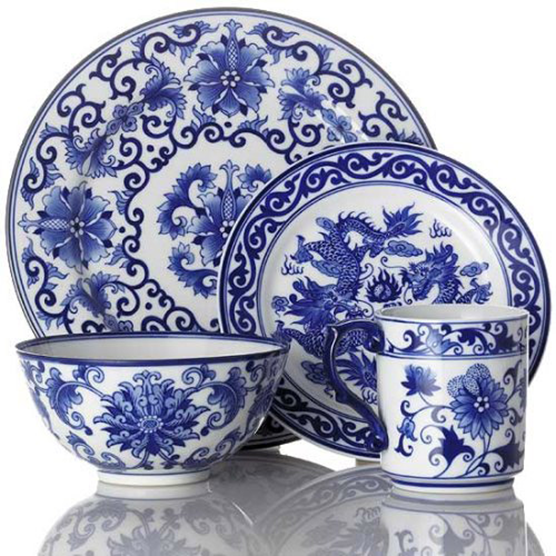
Blue and White Porcelain
For the past few years, the media and information industry has experienced unprecedented transformation, changing traditional values and breaking old boundaries in arts. In certain occasions, Chinese elements faded from the daily life of Chinese people, there seemed to be less awareness of, and less affinity with these important aspects of Chinese culture. On the other hand, some brand designs in China are influenced by western ideas; modern Chinese designers became more accustomed to Western design elements and techniques of expression, overlooking the use of local expressions.
For those designs that incorporate Chinese elements by calling on traditional features, they often fail to utilize innovative approaches that are the spirit of today’s markets. Designers should not mechanically copy and imitate design forms. Carelessly using Chinese calligraphy or duplicating traditional Chinese shading could make the overall design appear outdated or unattractive. Not only do such practices fail to promote the brand, but they also make the design neither modern nor traditional, delivering inappropriate or even incorrect brand messages that are subject to misinterpretation.
In Japan, some designers have used cultural elements in innovative ways. The Umeda Hospital signage system by design master Kenyahara is an example of the fusion of traditional and modern in oriental design. Bright red signage symbols were printed on the white floors, typical of Japanese expressions as is seen on the Japanese flag for example. Additionally, clean and washable white linen (made from the fibers of the flax plant), is used for signage symbols as Japan has a long history in flax plantation and weaving. The font, color and material of the signage design complement one another. This modern design delivered rich and consistent cultural connotations and impressions.
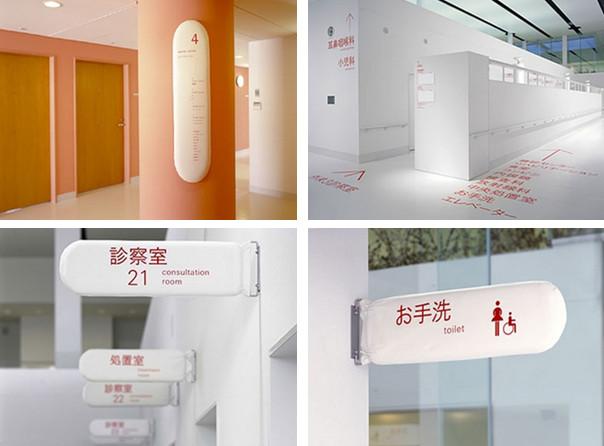
Umeda Hospital Signage Design
In the 21st Century, people started to pay more attention to how to best represent Chinese elements, generating a new buzz. Many Chinese companies realized that effectively incorporating Chinese elements would not make their overall image appear old-fashioned; instead, it would be enhanced by incorporating unique Chinese aesthetics. This is especially applicable to those brands that need to emphasize their Chinese identity. Designers must re-design and innovate to give Chinese elements a new life.
Hong Kong designer Alan Chan has long been promoting the philosophy of “Oriental Passion, Western Harmony” and “Merging the Chinese and Western elements”. This philosophy is magnified in many of the posters he designed through modern expression techniques. Additionally, the inventive use of Chinese elements in the logo of Bank of China designed by Mr. Kan Tai Keung integrated the historical and the present. In the overall composition, the Chinese character Zhong (中) was engraved in the center of a traditional Chinese coin, with the vertical stroke in Zhong (中) representing an auspicious ribbon. The logo, unique and modern, delivered a unique Chinese flavor. This approach was so impressive that later logo designs in the China banking industry took a copycat approach in using the traditional Chinese coin element.
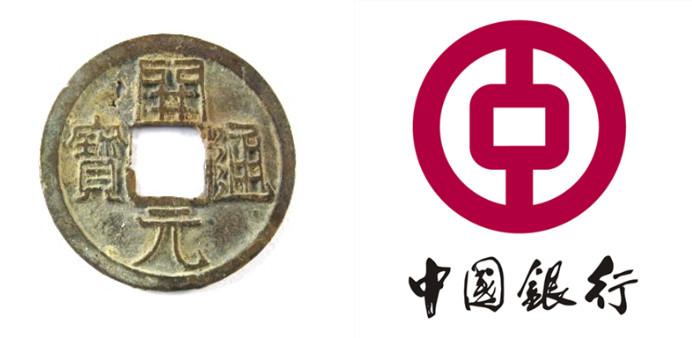
Traditional Chinese Coin & Bank of China Logo Design

Other Chinese Banks’ Logo Designs
Therefore, under the circumstances identified above, how should designers apply Chinese elements creatively and innovatively?
1) Pay attention to the combination of the connotation and form of Chinese elements, instead of applying them arbitrarily.
A good brand design needs to possess and visualize brand identity and the brand’s core idea. A simply nice-looking design that lacks meaning cannot win customers; instead, it may cause ambiguity. When using Chinese elements, the story is the same. Key considerations include: refining the connotation of Chinese elements, analyzing the target market, understanding whether or not customers could correctly interpret that connotation, choosing the right media, etc.
The design of the 2008 Beijing Olympics Games torch incorporated Chinese elements successfully. The use of the cloud pattern showed Chinese people’s longing for auspiciousness and expressed their wishes for the Games. At the same time, the cloud pattern complemented the overall paper scroll design. With the embossment allowing the shapes to stand out (known as basso-relievo in sculpture), this design effectively integrated the form and the connotation of Chinese elements into one.
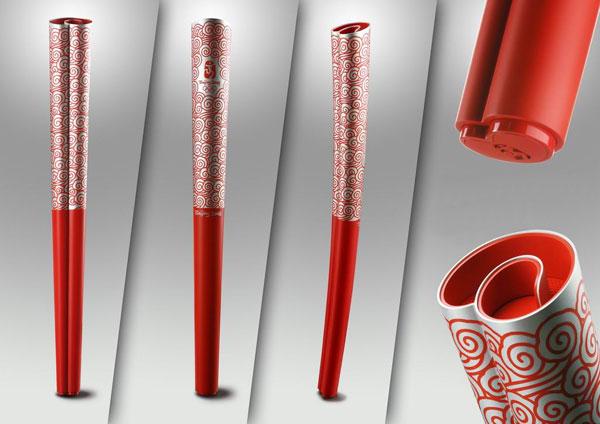
Beijing 2008 Olympics Torch Design
2) Look for opportunities to mix and match in design.
Although innovation and creativity can come from many sources, one interesting and effective method is mixing and matching different elements or styles together to realize a new design approach. This also applies to the incorporation of Chinese elements into brand design. Stiffly incorporating traditional elements would only make brand image outdated. Therefore, the unification of different expression forms has the potential to bring a fresh breeze to a category or industry.
The packaging design of the Oriental Leaves tea drinks expressed Chinese charm in both the bottle and the label designs—not just a simple duplication of Chinese elements. The packaging abandoned the commonly-seen round bottles. Instead, the designers focused on the “upright” concept in Chinese culture by creating a classical and solid square-shaped bottle that perfectly expressed the historical touch of tea. In the label design, the designers used Chinese elements such as the traditional merchant ship, jasmine flowers and temples and enhanced these elements with illustration techniques used in Japan. In combination with computer effects, the packaging design is filled with classical beauty and modern taste. The Oriental Leaves brand quickly gained popularity after launch and successfully stood out from competition in a crowded category. Consumers can easily differentiate the Oriental Leaves tea drinks because of the design.

Oriental Leaves Bottle Design
The successful incorporation of Chinese elements into brand design will undoubtedly help Chinese brands to establish a distinctive brand image. In order to do so, brands need to look into the roots of Chinese elements.
DOWNLOAD REPORT
A Labbrand Group Company © 2005-2024 Labbrand All rights reserved
沪ICP备17001253号-3To improve your experience, we use cookies to provide social media features, offer you content that targets your particular interests, and analyse the performance of our advertising campaigns. By clicking on “Accept” you consent to all cookies. You also have the option to click “Reject” to limit the use of certain types of cookies. Please be aware that rejecting cookies may affect your website browsing experience and limit the use of some personalised features.